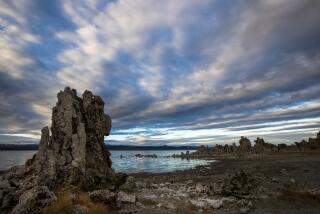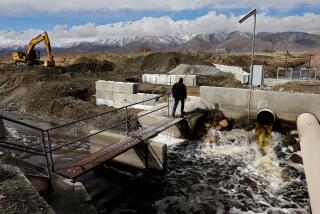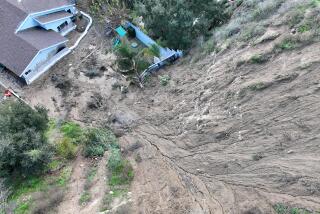No More Stalling on Owens Lake
Amid all the clouds of rhetorical grit over cleaning up the Owens Dry Lake, these facts are clear: With the opening of its aqueduct in 1913, the Los Angeles Department of Water and Power began to divert water from the Owens River southward. Eighty-five years of diversions turned Owens Lake, once fed by the Eastern Sierra, into a 110-square-mile dust bowl.
That lake bed is now the largest single source of air pollution in the United States. On windy days, tons of salty white dust mixed with arsenic and toxic metals blow off the lake bed and rain down upon residents of nearby Keeler, Ridgecrest and other towns the worst particle pollution in the country.
The federal Clean Air Act requires significant reductions in this hazardous pollution by 2006 to meet federal standards. State law says that “reasonable” measures to clean up the pollution should be paid for by the party that caused it, and that’s the DWP.
Cleanup options have now been studied and modeled for 18 years, during which time the DWP has adroitly delayed and denied responsibility for the mess it created. Now, regrettably, Gov. Wilson’s administration has stirred the dispute still further. The governor’s air quality staff on Tuesday recommended rescinding an order that would have forced the city to get to work on cleanup. State officials said that technical flaws in the dust storm computer models used to devise the cleanup plan by the Owens Valley air agency could force Los Angeles to spend more money and use more city water than necessary.
If the California Air Resources Board endorses its staff’s recommendation, the parties will have to go back to square one. After nearly two decades of trying, what new plan could they devise that will be more palatable to the DWP? In the meantime, federal law requires California to adopt a cleanup plan by August 1999 that will comply with the federal 2006 deadline. Failure to meet the first deadline could lead to loss of all state and local control and force the state to pay for the project.
The DWP needs to show some good faith here; one way might be to begin cleanup on a nine-square-mile patch of lake bed, which it had offered to do late last year. Time is running out.
More to Read
Sign up for Essential California
The most important California stories and recommendations in your inbox every morning.
You may occasionally receive promotional content from the Los Angeles Times.










